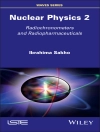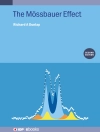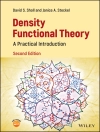In this book, the authors bring together basic ideas from fracture mechanics and statistical physics, classical theories, simulation and experimental results to make the statistical physics aspects of fracture more accessible.
They explain fracture-like phenomena, highlighting the role of disorder and heterogeneity from a statistical physical viewpoint. The role of defects is discussed in brittle and ductile fracture, ductile to brittle transition, fracture dynamics, failure processes with tension as well as compression: experiments, failure of electrical networks, self-organized critical models of earthquake and their extensions to capture the physics of earthquake dynamics. The text also includes a discussion of dynamical transitions in fracture propagation in theory and experiments, as well as an outline of analytical results in fiber bundle model dynamics
With its wide scope, in addition to the statistical physics community, the material here is equally accessible to engineers, earth scientists, mechanical engineers, and material scientists. It also serves as a textbook for graduate students and researchers in physics.
Spis treści
Preface
INTRODUCTION
MECHANICAL AND FRACTURE PROPERTIES OF SOLIDS
Mechanical Response in Materials
Ductile, Quasi-Brittle and Brittle Materials
Ductile and Brittle Fracture
CRYSTAL DEFECTS AND DISORDER IN LATTICE MODELS
Point Defects
Line Defects
Planar Defects
Lattice Defects: Percolation Theory
Summary
NUCLEATION AND EXTREME STATISTICS IN BRITTLE FRACTURE
Stress Concentration Around Defect
Strength of Brittle Solids: Extreme Statistics
Extreme Statistics in Fibre Bundle Models of Brittle Fracture
Extreme Statistitcs in Percolating Lattice Model of Brittle Fracture
Molecular Dynamics Simulation of Brittle Fracture
Summary
ROUGHNESS OF FRACTURE SURFACES
Roughness Properties in Fracture
Molecular Dynamics Simulation of Fractured Surface
Summary
AVALANCHE DYNAMICS IN FRACTURE
Probing Failure with Acoustic Emissions
Dynamics of Fiber Bundle Model
Interpolations of Global and Local Load Sharing Fiber Bundle Models
Random Threshold Spring Model
Summary
SUBCRITICAL FAILURE OF HETEROGENEOUS MATERIALS
Time of Failure Due to Creep
Dynamics of Strain Rate
Summary
DYNAMICS OF FRACTURE FRONT
Driven Fluctuating Line
Fracture Front Propagation in Fiber Bundle Models
Hydraulic Fracture
Summary
DISLOCATION DYNAMICS AND DUCTILE FRACTURE
Non-Linearity in Materials
Deformation by Slip
Slip by Dislocation Motion
Plastic Strain due to Dislocation Motion
When Does a Dislocation Move?
Ductile-Brittle Transition
Theoretical Work on Ductile-Brittle Transition
ELECTRICAL BREAKDOWN ANALOGY OF FRACTURE
Disordered Fuse Network
Numerical Simulations of Random Fuse Network
Dielectric Breakdown Problem
Summary
EARTHQUAKE AS FAILURE DYNAMICS
Earthquake Statistics: Empirical Laws
Spring-Block Models of Earthquakes
Cellular Automata Models of Earthquakes
Equivalence of Interface and Train Models
Summary
OVERVIEW AND OUTLOOK
APPENDIX
Percolation
Real Space RG for Rigidity Percolation
Fiber Bundle Model
Quantum Breakdown
Fractals
Two Fractal Overlap Model
Microscopic Theories of Friction
O autorze
Purusattam Ray is professor in Physics at The Institute of Mathematical Sciences (IMSC), Chennai and an adjunct professor of Homi Bhabha National Institute (HBNI), Mumbai. He received his Ph.D. from Calcutta University in 1989. He was then SERC research fellow at the University of Manchester, England and subsequently Max Planck fellow at the MPI for Polymer Studies in Mainz and at the University of Mainz, Germany. He has made major contributions in the study of statistical physics of fracture. He annually organizes the International workshop on fracture and breakdown processes.
Bikas K. Chakrabarti is a senior professor of theoretical condensed matter physics at the Saha Institute of Nuclear Physics (SINP), Kolkata, and a visiting professor of economics at the Indian Statistical Institute, Kolkata, India. He received his doctorate in physics from Calcutta University in 1979 (for research at SINP). Following postdoctoral positions at Oxford University and Cologne University, he joined SINP in 1983. His main research interests include physics of fracture, quantum glasses, etc., and the interdisciplinary sciences of optimization, brain modeling, and econophysics. He has written several books and reviews on these topics.
Soumyajyoti Biswas finished his master degree in Physics from Calcutta University in 2008. Since then he is a research fellow at Saha Institute of Nuclear Physics.












